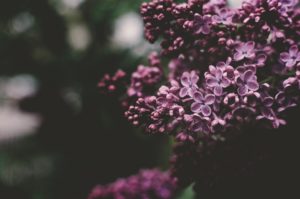In a recent conversation with a friend, the subject of lilacs growing in the wild came up. My friend had been on a walk in the woods of Wellfleet when she came across a lilac in the middle of the forest. How did a lilac get there? The answer is someone’s home once stood near where that plant grows. One that long ago fell and turned back into soil. Someone planted that lilac. Lilacs tell a story.
Our woods are littered with old home sites. There are places where small communities once stood — schoolhouses, a post office, a collection of little homes. All that remains now as evidence is a sinkhole from a cellar, a patch of daylilies, a rambling old apple tree, and, quite often, a grove of lilacs.
Lilacs have a long history in this country. They were dug from their native soils and sailed over the Atlantic in the early 1700s by colonists. The plants meant enough to people that they carried them to a new world. Lilacs were a connection to their pasts, their histories, the families and land they were leaving behind. But that scent that evokes so much memory could not be left behind.

The lilac is native to Eastern Europe and Asia. It grows in rocky plains and open spaces. It is hardy — drought tolerant, cold tolerant, heat tolerant, adaptable to pruning, and highly disease resistant. Lilacs spread and divide easily, so they proliferated in their new land. Once established, lilacs require almost no care. Even ignored, they will still dependably produce a profusion of the most luscious blossoms. They would have been ideal at a time when tending to something that doesn’t feed you might have been considered a waste of effort.
George Washington’s and Thomas Jefferson’s gardens had lilacs. They have an elegance about them, the enduring fineness of lace or good manners. They became a common plant in American yards.
New Englanders planted lilacs near their front doors as a sign of welcome. Those lonesome lilacs in the woods might have marked an entryway. Or, because an outhouse had to be moved from time to time, when it was, a lilac would be planted in its place. As the outhouse was moved along down the line, a row of lilac bushes would follow — some sort of cosmic balance being restored.
Lilacs are a memory plant. They are one of those childhood plants, like tulips and wisteria, that have an effect on you at a young age. The flower is likely one of the first you could call by name. Smelling a lilac will draw you out of your present and back to a pale purple grove at your grandmother’s house, a warm afternoon when the air tasted sweet, a roadside where you went to cut them and bring them home, the essence of spring.
Our sense of smell lives deep in the limbic system, in one of the primordial parts of our brains, where emotion and memory also reside. The smell of the lilac flower is a sweet, rich, delicate thing. They bloom at about the same height as the human face. We can’t help but smell them. And so, they are part of our memories.
The lilacs growing in our woods hold the space where a family lived, where babies were born. A lilac planted in the waning days of a house’s life can easily remain for a hundred years after the house is gone. Someone dug a hole and planted that lilac. Just as a lilac awakens a story of yours with its flowers, the plant holds a longer story in its roots. A lilac is a connection to a history otherwise lost in oaks and pines. A memory growing in the woods.



